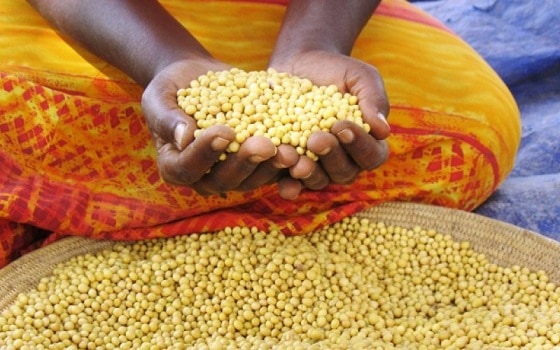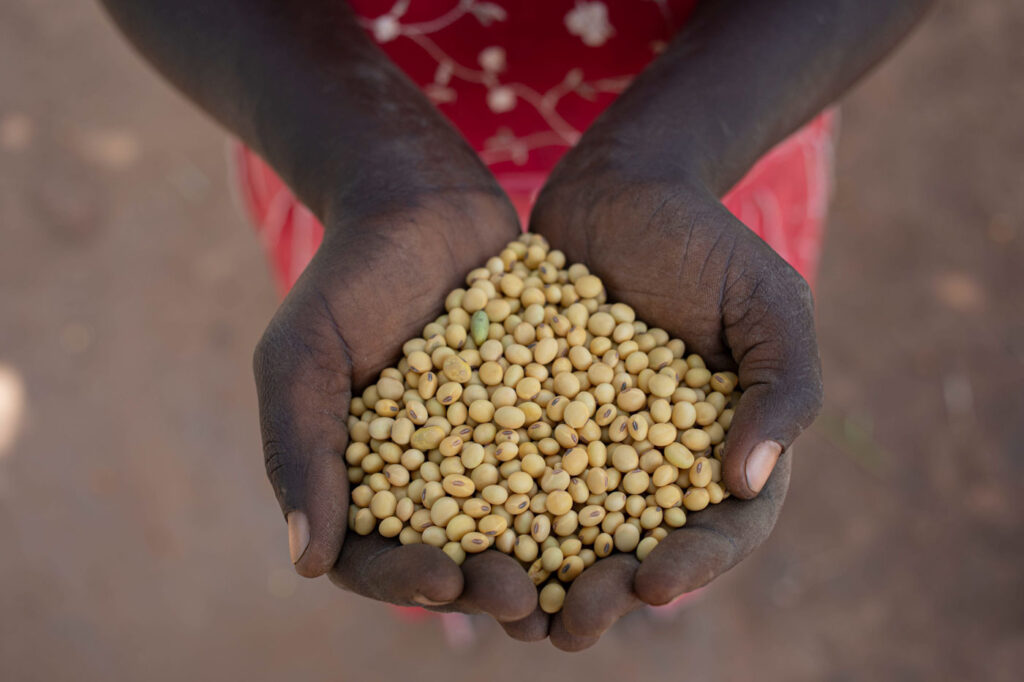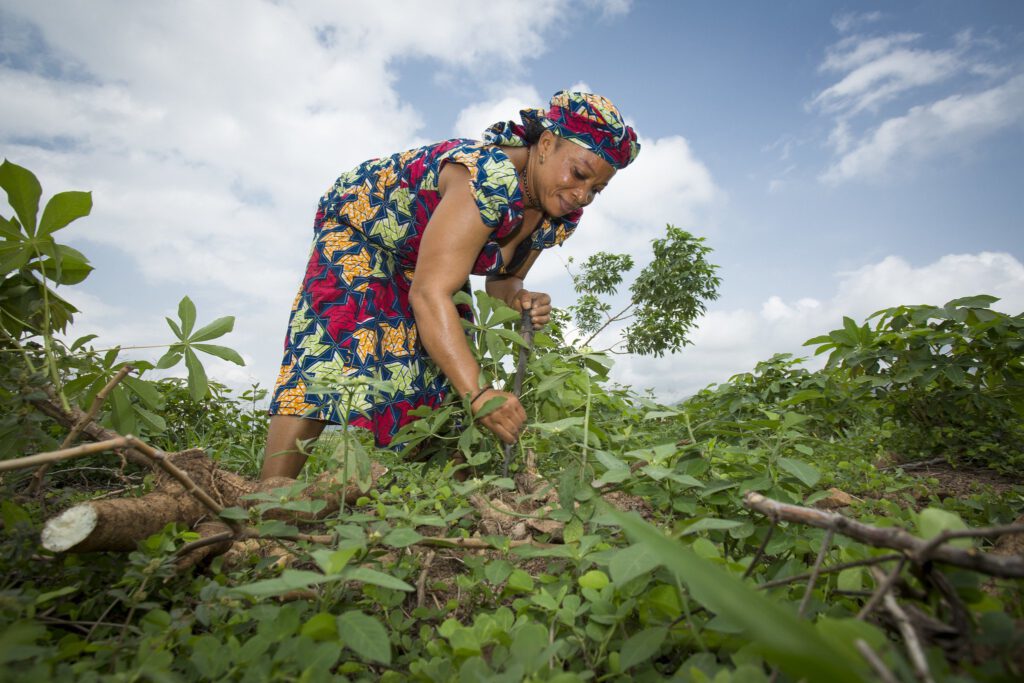
Soybeans Production in Malawi

Hello everyone, we have decided to offer you a step by step beginners guide to how you can start producing and farming your own soybeans in Malawi without stressing and struggling. This introduction to farming soyabeans was written by me, Hazel Martha Phiri, I am a professional farm manager, you can always contact me if you have any questions, comments or if you need my help on your farming project, I am here for you. This is what I love to do.
Soybean production in Malawi has had a sudden boost in the past 3-4 years as the global and local demand has continued to rise because of the versatility of these beans. Malawi is among the top 40 producers of soybean in the world according to Malawi Investment and Trade Centre.
Soybean Benefits
- Soybean is rich in protein, vegetable oil and essential minerals.
- This crop has the ability to fix atmospheric nitrogen and therefore, improves soil fertility.
- Soybeans are also processed for their oil and protein for the animal feed. Other products include soy milk, soy flour, soy protein and soya pieces.
Let us now begin the guide which will include costs, labour and other things that you might find important for your Soybean farming journey, by the way farming stages include planting, rogueing, spraying and weeding and therefore below is the summary for farming stages and costs.
Soybean planting and crop management
The seed rate is about 90 kg per ha. The desirable plant population is around 350,000 plants per ha, but soyabean are capable of adapting to a wide range of plant populations. A minimum plant population is 200,000 plants per ha, while a maximum is 550,000 plants per ha.
COST OF SEEDS FOR 100/HA
| ITEM | QUANTITY | UNIT COST | TOTAL/HA | TOTAL/100HA | TOTAL |
| SEEDS | 90KG/HA | 13000 | 117,000 | 117,000,000 | 11,700,000 |
Planting costs for soybeans
Land preparation, Planting (seed rate and plant spacing), inoculant application, and weeding are the same as for production of grain.
Below is the break down for the costs of labour for 100 hectares of soybeans.
LABOUR to produce soybeans
| Item | quantity | Unit cost | TOTAL/HA | Total/100HA |
| LAND CLEARING | 2.5 MAN DAYS | 10,000/ACRE | 25,000 | 2500,000 |
| RIDGE MAKING | 2.5 MAN DAYS | 5,000/ACRE | 12,500 | 1250,000 |
| SOWING | 2.5 MAN DAYS | 8,000/ACRE | 20,000 | 2,000,000 |
| FERTILIZER APPLICATION | 2.5 MAN DAYS | 8000/ACRE | 20,000 | 2,000,000 |
| WEEDING | 2.5 MAN DAYS | 10,000/ACRE | 25,000 | 2500,000 |
| HARVESTING | 2.5 MAN DAYS | x | x | 2500,000 |
| THRESHING | 2.5 MAN DAYS | x | x | 200,000 |
| WINOWING | 2.5 MAN DAYS | x | x | 200,000 |
Harvesting Strategies for Soybeans

Hand harvesting
The plants are cut with a hoe or sickle below the lowest pods on the stem and placed on suitable surface (e.g. thick plastic), spread out so that they dry out.
The plants are harvested in the early morning when they are sufficiently moist from overnight dew, to prevent shattering.
Around mid-day when the pods have dried out, the soya bean plants are thrashed with sticks to shatter the pods to release the seeds.
The chaff is winnowed off and the grain spread out to dry prior to bagging and marketing or storage.
Hand harvesting output per person averages 100 kg per day but experienced farm labourers can each thrash and winnow 150 to 250 kg of clean soya bean per day.
- Labour for hand-harvesting needs to be mobilised in good time to avoid shattering losses.
- Labour can then be mobilised to winnow the soya grain.
- Another way of threshing soya bean is to drive a tractor over the heaped dry soya bean plants.
- The heap is turned over regularly to expose un-shattered pods and to allow for drying.
Combine harvesters
Mostly they are used in large scale soya bean production for areas exceeding five hectares. The harvester has a head which cuts the stems near the ground, thrashes, winnows and places the grain in a special bin. Pod clearance refers to the distance from soil level to the lowest point where pods are attached to the stem.
The combine blades must cut below this point to take in all the beans. If pods are too close to the ground (small pod clearance), some will be too low to be harvested leading to yield losses.
The harvester, if properly set, recovers anything from 70 to 90 percent of the crop. The percentage recovery is higher if the machine is properly serviced and tuned and, the crop has been well-maintained to minimise lodging and remove green weed infestation.
All soya bean plants that have fallen over (lodged) cannot be picked up by the harvester. It is normal practice to engage labour to ‘clean up’ or glean the soya field of all soya missed out by the harvester otherwise losses will be high.
INOCULANT and fertilizers
For fertilizer it is recommended that the farmer applies 50kg of 23:21:0 + 4S per ha
| Costs of fertilizer | Labour costs | Amount/ha | Costs/100HA |
| K60000/50KG | 50KG/HA | 6,000,000 |
| Inoculant(grams) | Amount | Inoculant/HA | AMOUNT/HA | AMOUNT/HA |
| 50grams | K1500 | 6PACKS | K9000 | K900,000 |
The higher the plant population, the greater is the danger of lodging, but the higher is the pod clearance. Shorter stature varieties like Status and sequel should be planted at a higher population than taller varieties. The row spacing may be from 25 to 90 cm. The closer the row spacing, the higher the yield, but the yield advantage is not great (about 5 to 10 %). The wider the row, the closer are the seeds placed in the row, and this sometimes helps, especially for emergence on soils that have a tendency to cap (seal on the surface). Do not plant seed deeper than 5 cm. Be careful not to plant soybean in such a way that when covered with soil they are in a furrow; rather the soil should form a slight mound over the row, as this makes it easier for the seedling to emerge. It is essential not to plant too deep. Seed should be planted 25-50 mm deep, depending on soil texture. If soil crusting occurs before emergence, wetting the soil with irrigation or breaking the crust with a ‘millipede implement’ will improve emergence.
The time to plant soybeans is right after planting maize, but this should preferably be before mid-season. Mid-season crop management Soyabean are very susceptible to drought during the flowering and pod-filling stage. The pod filling stage occurs in the last third of the crop’s life, and the beginning of this stage is identified when the pods on the upper nodes of the main stem are 2 cm long and the small seeds are visible in the pods. If supplementary irrigation is available, this is the time to apply water, as it can produce large yield increases. Supplementary irrigation (if available) should target these critical stages (i.e. if they coincide with dry spells): For a crop takings about 125 days from planting to physiological maturity these critical periods will be as follows: – Germination – day 1 to day 6 Flowering – day 55 to day 75 Pod fill – day 95 to day 12
Weeding and Roguing Soybeans
General good crop management is recommended to allow the seed crop to show all its growth characteristics. This helps in identifying off- types at vegetative, flowering and harvesting stages. The seed crop which is true to type should display same hair colours, branching, same flowers and leaves throughout the vegetative growth up to the time of harvest. A farmer is advised to remove all off types and diseased plants (rogueing). The seed field should be free from weeds all the time. Disease and pest control is important in order to achieve maximum yield.
| Activity | Hectarage | C0st | Total/100HA |
| WEEDING | 1 ACRE | 500,00 | |
| Rogueing | |||
| Spraying (round up and harness) | 5packs/hector | 8000 | 40,000 |
BELOW IS THE SUMMARY FOR ALL THE COSTS/ 100 HA
| NO | ITEM | QUANTITY | UNIT COST/ACRE | TOTAL COST/HA | TOTAL COST/100.HA | SUB TOTAL |
| 1 | MATERIALS | |||||
| SEEDS | 90KG/ACRE | 13000 | 117,000 | 11,700,000 | ||
| FERTILIZERS | 50KG/HA | 60,000(HA) | 60,000 | 6,000,000 | ||
| INOCULANT | 300GRAMS/HA | 9,000(HA) | 9,000 | 900,000 | ||
| PESTICIDES (ROUND UP AND HARNESS) | 5PACKS/HA (EACH COSTING K8000) | 40,000(HA) | 40,000 | 4,000,000 | ||
| SACKS | 100 | 100/SACK | 1,000,000 | |||
| SUB TOTAL | 23,300,000 | |||||
| LABOUR | ||||||
| LAND CLEARING | 10,000/
ACRE |
25,000 | 2500,000 | |||
| RIDGE MAKING | 5,000/ACRE | 12500 | 1250,000 | |||
| SOWING | 8,000/ACRE | 20,000 | 2,000,000 | |||
| FERTILIZER APPLICATION | 8,000/ACRE | 20,000 | 2,000,000 | |||
| WEEDING | 10,000/ ACRE | 25000 | 2500,000 | |||
| HARVESTING | 10,000/ ACRE | 25000 | 2500,000 | |||
| THRESHING | ————— | =———– | 200,000 | |||
| WINOWING | —————- | ————– | 200,000 | |||
| SUBTOTAL | 13,150,000 | |||||
| 36,950,000 |
What you should assume or expect from the data table above
- Expected Average yield per hectare = 100 bags/hector)
- Price per 1kg of seed = 1200/kg
From agronomic point of view, expected yield achievable with high yielding variety of soybean (tikolore seed) is about 100bgs per hectare. Therefore, for 100 hectare a minimum yield of 10,000 bags of 50kgs.

EXPECTED RESULTS
| ID NO. | ITEM | YIELD PER HECTARE | YIELD PER 100 HECTARES | SELLING PRICE | TOTAL AMOUNT AFTER SELL/ HECTARE | TOTAL AMOUNT AFTER SELL/100 HECTARES | TOTAL PROFIT REALIZED |
| Expected production |
100 BAGS/HECTARE (5,000KGS) |
500,000KGS/100 HECTARES |
K1200/KG |
6,000,000 |
600,000,000 |
563,050,000 |
Well this does it for part 1 of soybean production in Malawi, I know this guide might be a bit technical for some beginners so please feel free to contact me for consultation for your farming needs, happy farming!
- Soybeans Production in Malawi - August 16, 2022
- Banana production in Malawi Part 2 - April 17, 2021
- Introducing Mobile Msika Wathu Program by Smart Energy Enterprise - February 16, 2021
